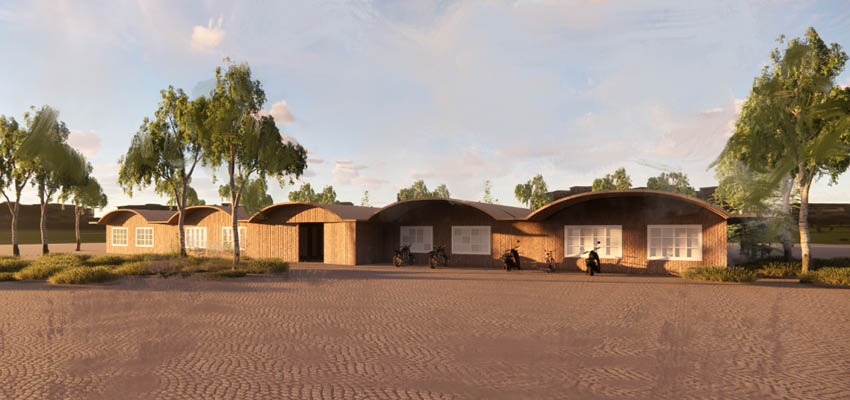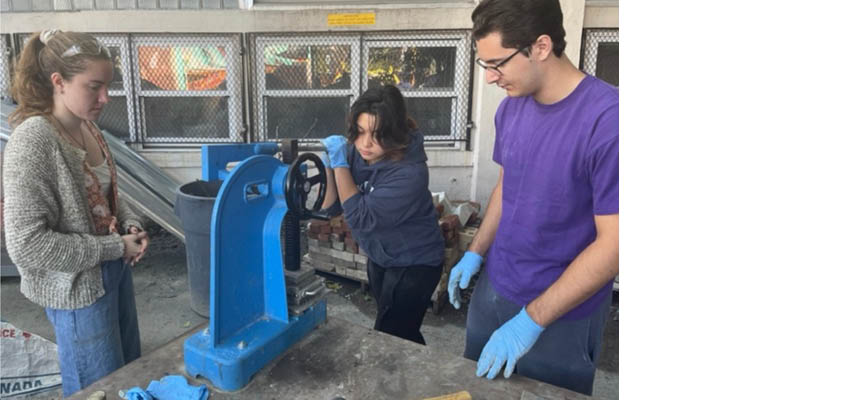
Student team
MIT students unless otherwise noted
- Soala Ajienka, Master of Architecture, Department of Architecture
- Megan Harvey, SB Mechanical Engineering, class of 2025
- Lauren Moore, SM Building Technology, Department of Architecture
- Hailey Quinn, SB Architecture, class of 2024
- Adriana Ramirez Cuebas, SM Building Technology, Department of Architecture
- Daniel Volpe, SB Architecture, class of 2024
Community partner
Country
Cambodia
Project description
The 2023 project for D-Lab Schools: Building Technology Lab differs from those in previous years by considering needs of children that would limit their ability to attend school and otherwise reach their full potential.
Our partner, Safe Haven Therapeutic and Medical Outreach, a non-profit organizationin Siem Reap, Cambodia, was formed by Heather Connell after a 2009 visit to Siem Reap to support children with special needs by providing culturally appropriate care. Its services include physical therapy, nursing, social work, and play therapy to encourage development of motor and cognitive skills.
Safe Haven has outgrown therental house it now occupies, has purchased land for a new building, and has invited MIT students to initiate design studies that will shape the construction of an affordable and highly sustainable facility that, through a participatory design driven by climate and local materials and skills, will fully meet the needs of staff and the children they serve.
Contact with Safe Haven was initiated by MIT Professor John Ochsendorf, who collaborated throughout the term with instructor Les Norford and Teaching Assistant Nebyu Haile.
The class this term consisted of two groups of three students each. Both started with the same sketch plan from Safe Haven but developed different designs that evolved from the exploration of various technologies. Studies included:
(a) outdoor thermalcomfort measurements in Cambridge and in Siem Reap to understand thermal comfort concepts and the remediation of heat stress;
(b) studies of current climate (temperature, humidity, wind, solar radiation) and anticipated climate change, to provide a basis for estimating indoor and outdoor conditions through a year that includes seasonally heavy rains and higher temperatures during drier months;
(c) construction and testing of earth bricks that provide adequate structural strength with lower embodied carbon than the ubiquitous concrete blocks;

(d) physical and software daylighting analysis to prototype roof and wall optionsand visualize indoor lighting conditions;
(e) simulations of buoyancy-and wind-driven natural ventilation and its impact on indoor air quality and thermal comfort;
(f) development of a structural concept for the building, based on numerical simulation and the application of analytic equations, that accounted for anticipated local availability of materials and construction expertiseand reduction of waste and cost; and
(g) repeating and strengthening assessments of daylighting and indoor thermal comfort for their refined designs, with attention to shading windows and incorporating ceiling fans for low-cost comfort.
Students presented their work to Safe Haven personnel in the final review.
Next steps
Based on received comments, follow-up work in the spring is anticipated to include refinements to several of the analyses in parallel with Safe Haven’s contracting the services of a local architecture firmthat will work with MIT to develop adetailed and appropriately approved design. Safe Haven plans to host a visit of MIT students in June to inspect notable local buildings, meet with a developer who can fabricate low-cement blocks, and refine a single design in collaboration with the architect.
Text: Les Norford with class students
MIT D-Lab class
D-Lab: Schools – Building Technology Laboratory
Contact
Les Norford, Instructor, D-Lab: Schools - Building Technology Laboratory; Professor of Architecture; Director, Building Technology Group

